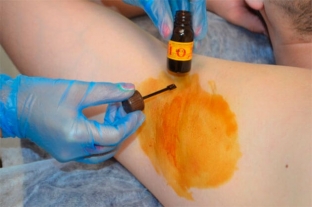Hyperhidrosis is a condition characterized by excessive sweating and is a socially significant medical problem. According to different authors, the prevalence of primary hyperhidrosis among the population ranges from 3 to 15%. From 1 to 5% of people suffer from severe forms of hyperhidrosis, among which the majority are young people. Hyperhidrosis can be primary or secondary. Primary hyperhidrosis is manifested by several specific signs. How is primary hyperhidrosis diagnosed and treated?
Classification of hyperhidrosis. Reasons for the development of primary hyperhidrosis
According to the etiological basis, hyperhidrosis is divided into primary, or idiopathic, and secondary, arising against the background of endocrine, oncological, neurological and other diseases. Find out the characteristic signs of primary hyperhidrosis at estet-portal.com. Primary hyperhidrosis is a common pathological condition that leads to physiological problems, physical and social discomfort, dermatological diseases and a deterioration in the quality of life of patients.
Because primary hyperhidrosis is primarily associated with emotional factors, it affects young patients with dysregulation of the autonomic nervous system, expressed in increased sweating (“nervous sweating”).
Often, with age, primary hyperhidrosis disappears, or its manifestations noticeably weaken.
What are the characteristics of primary hyperhidrosis?
According to the degree of distribution, hyperhidrosis is divided into local and generalized.
Primary idiopathic hyperhidrosis is usually localized and occurs predominantly in the armpits, hands, feet, and face.
Secondary hyperhidrosis is usually generalized. Primary hyperhidrosis is defined as localized, visible excessive sweating lasting at least 6 months without apparent cause, and which is characterized by some features.
Main characteristics of primary hyperhidrosis:
- Hyperhidrosis is bilateral and relatively symmetrical;
- sweating interferes with daily activities;
- at least 1 episode of hyperhidrosis per week;
- age of disease onset is less than 25 years;
- the presence of similar disorders in relatives;
- disappearance of localized hyperhidrosis during sleep.
Methods for detecting and treating primary hyperhidrosis
Affordable and easily implemented methods of objectifying primary hyperhidrosis include Minor's iodine-starch test, based on the reaction of starch with iodine in the presence of sweat, as well as photographing the hyperhidrosis area before and after treatment.

The following areas can be distinguished in the treatment of excessive sweating:
- conservative treatment (use of topical drugs, iontophoresis, taking anticholinergic drugs, beta-blockers, local astringents);
- injections of botulinum toxin preparations;
- surgical operations.
Each of these directions differs in indications, therapeutic efficacy, duration of action, side effect profile. In each individual case treatment of primary hyperhidrosis should be based on an individual approach, taking into account the clinical picture of the disease and the expectations of patients.






Add a comment